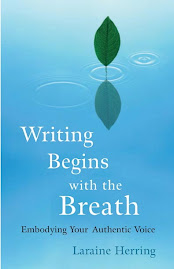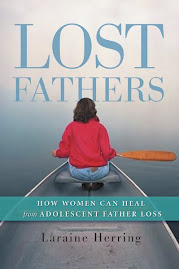The lungs are the organ that holds grief. When we store (stuff) grief in our bodies, it exhales from the lungs with a sound reminiscent of weeping. The liver, its companion organ, begins to toxify when the lungs have had enough. A month ago, at a bodywork session with my teacher, Cain, he pressed my liver until it screamed. Then, somehow he managed to work his knife-like fingers in between my ribs and poke at my lungs until gunk came out -- the coughing, panicked gunk of someone held too long underwater. There were tears, but not many. There was much more coughing, much more desperate grasping and gasping for oxygen. When Cain asked me what I felt right before this unexpected release, I said, "I don't know." That was true. I had no idea what sadness felt like. This was the 'yang' chi nei tsang session. The session where Cain pushed and poked and forced and moved 30 year old enmeshed emotions.
Yesterday's session was the kindler-gentler chi nei tsang session. The yin version. The opening that can occur only after the clearing out has occurred. Yesterday there was no coughing. No pain in my liver. No snake of lymph nodes across my belly. Yesterday there was tingling throughout my whole body, a dizziness in my head, and a spaciousness that held a laughing ball of light.
I am not good at sadness, though my mother would likely disagree. I am much better at anger. At our first chi nei tsang session back in November, Cain said he kept hearing "anger masking sadness" when he was working on me. I'd always felt it was more the opposite -- sadness masking anger. I thought anger was the base emotion. The one that dare not be named. And that may be true -- especially for women. But I remember anger and I remember how much energy it took to feed. Sadness, on the other hand, requires a softness. In order to feel sadness, you must be able to be vulnerable. The anger protects the sadness. The anger keeps the real truth from coming out. Anger may burn and turn into cancers and heart attacks, but sadness festers and creates a sticky swamp of stagnation. Sadness solidifies the body.
What does it feel like to experience sadness? To really stay in the chair while the sadness moves through you? I don't know yet. Maybe that's the secret to Unbearable Compassion. Maybe that's the way back into that book. I don't know. I know I don't have any energy left for anger -- for the fury, the rage, that I thought had fueled most of my writing. Without that anger, it's harder to create momentum (to use an overused political phrase right now). To access sadness requires patience, and an opening rather than a closing. A feminine approach rather than my much preferred masculine approach. Sadness requires listening. I'm noticing that when I get close to sadness, anger jumps in, and the anger usually jumps in with a judgment or a rationalization which results in ultimately silencing the sadness, which results in it continuing to resurface in my lungs, my liver, my shoulder.
My characters: Claire, Helen, Frank -- they are all deeply sad. How have they masked that sadness? How have they kept it down in their bodies? What if Helen cried instead of drank? What if Frank cried instead of stuck to his rigid routine? What if Claire cried instead of ran? How long do you have to go without crying (really crying) before your body treats its tears as poison rather than healing?
I am trying to soften. I'm trying to have fewer sharp edges. I'm trying to let my femininity merge into vulnerability. I am guessing, as has been the truth my entire life, that my characters will show me how to do this.
Subscribe to:
Post Comments (Atom)











1 comment:
I found this post both quite moving and quite helpful. Thank you.
Post a Comment